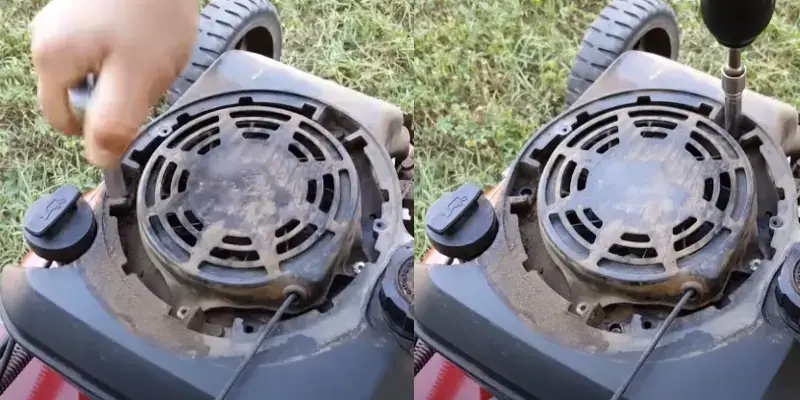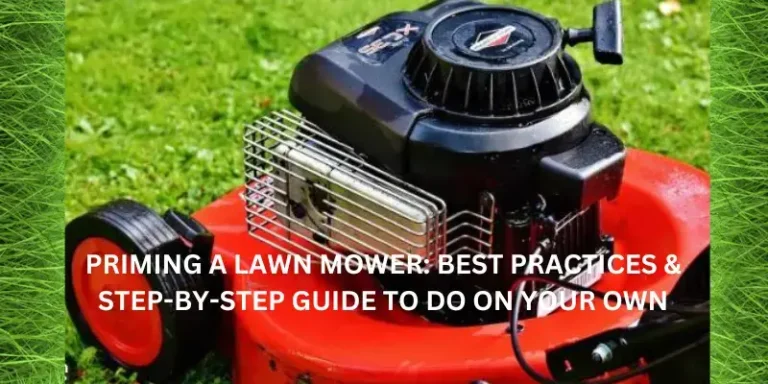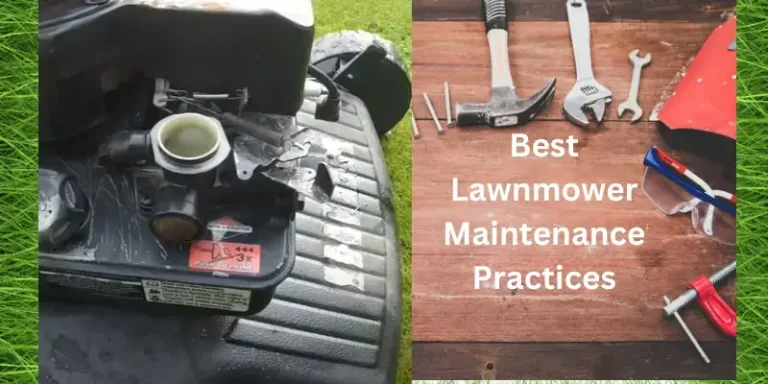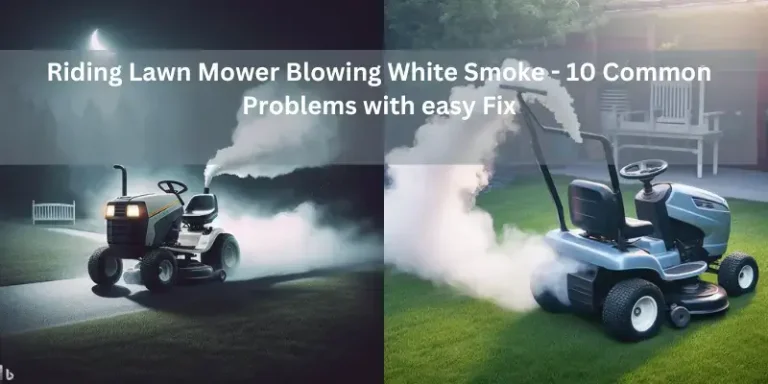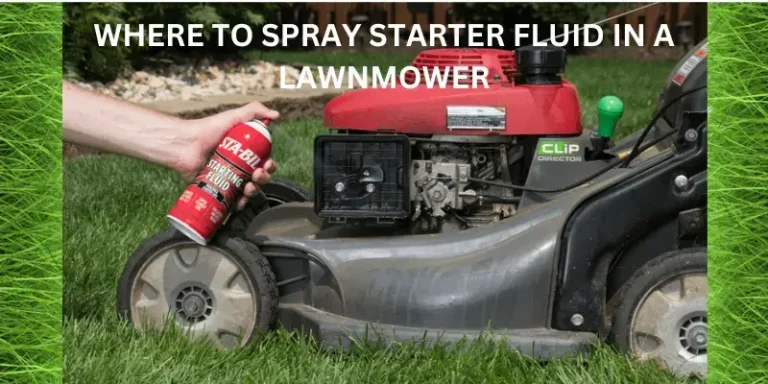Lawn Mower Starts, But Then Dies: Causes and Solutions
Few things are more infuriating than a lawnmower taking a fit of life, upon starting, only to die a handful of moments later. It is a case that many people are familiar with, and it truly makes a simple yard task into one great, big headache. When your lawnmower stalls repeatedly, it interferes with yard work as well, and this may mean more valuable time and labor spent slopping around the yard.
Understanding why your lawn mower behaves this way is the first step to finding a solution. This guide will show you only some of the possible causes of this problem and provide you with practical solutions that will help restore your lawn mower to proper running.
Common Causes Why Your Lawn Mower Starts and Dies?
In the below paragraphs, I am discussing the most common causes of why your lawnmower starts and dies:
Old or Contaminated Gasoline
One of the primary reasons that the lawn mower starts and then dies is old or contaminated gasoline. Gasoline slowly loses its quality over time, therefore losing its combustibility. This can result in clogging the carburetor and causing the engine not to run steadily. That is one factor inside old gasoline that most people forget about but is of critical importance for its performance.
Contaminated gas, which may contain water or debris, can also cause similar issues. When the carburetor is clogged or the fuel itself is compromised, the mower might start but won’t keep running. Regularly replacing old gasoline and ensuring your fuel is clean can prevent these problems.
Clogged Fuel Lines or Filter
Debris and dirt in the fuel lines or filter can restrict the flow of gasoline to the engine. This restriction can cause the engine to stall soon after starting. A clogged fuel line or filter interrupts the necessary fuel supply, leading to a temporary start followed by a stall.
Inspecting and cleaning the fuel lines and filter regularly can help maintain proper fuel flow. If you notice debris or dirt buildup, cleaning these components can restore your mower’s functionality and prevent stalling.
Spark Plug Problems
Fouled Spark Plug
A fouled spark plug, often covered in carbon buildup, can prevent your lawn mower from maintaining a consistent ignition. This buildup hinders the spark plug’s ability to produce a proper spark, which is essential for igniting the fuel-air mixture in the engine.
If your spark plug is worn out or covered in carbon deposits, it might cause your lawn mower to start briefly but then die. Regular maintenance, including cleaning or replacing the spark plug, can ensure that the ignition process runs smoothly.
Incorrect Gap between Electrodes of Your Spark Plug
The gap between the electrodes on your spark plug is important for optimal engine performance. If this gap is too wide or too narrow, it can affect the spark plug’s ability to ignite the fuel-air mixture correctly. An incorrect gap can cause misfires and engine stalls
Ensuring that your spark plug has the correct gap can prevent these issues. Regular checks and adjustments, as per your lawn mower’s specifications, will help maintain consistent engine performance.
Carburetor Issues
Dirty Carburetor
A dirty carburetor can disrupt the delicate balance of air and fuel mixture required for the engine to run smoothly. When dirt and debris accumulate in the carburetor, it affects this balance, leading to engine stalling.
Cleaning the carburetor is essential for maintaining the correct air-fuel mixture. This process can be more involved and may require professional help if you are not familiar with the components of your lawn mower.
Other Potential Causes behind the Problem (Lawnmower Start then Dies)
Dirty Air Filter
A dirty air filter can restrict airflow into the engine, affecting combustion. When the engine doesn’t get enough air, it can’t burn fuel efficiently, leading to stalling. Regularly checking and cleaning the air filter can prevent this issue.
Low Engine Oil
Insufficient engine oil can cause overheating and excessive friction, which can make the engine stall. Regularly checking oil levels and topping up when necessary is vital for smooth engine operation.
Solutions and Fixes
Addressing Fuel Delivery Issues
- Draining and Replacing Old Gas
- Ensure the mower is turned off and cool.
- Locate the fuel tank and carefully drain the old gasoline into a suitable container.
- Refill with fresh, clean gasoline.
- Optionally, add a fuel stabilizer to keep the gasoline fresh.
Replacing old or contaminated fuel with fresh gasoline can solve many stalling issues and improve the mower’s overall performance.
Cleaning Fuel Lines and Filters (Optional)
For those comfortable with more detailed maintenance:
- Locate the fuel lines and filter.
- Detach and clean them, ensuring no debris or dirt is blocking the flow.
- Reattach them securely.
Learn more: Replacing Fuel Filter In Lawnmowers
Fixing Spark Plug Problems
- Cleaning or Replacing Spark Plugs
- Remove the spark plug using a wrench.
- Inspect for carbon buildup or damage.
- Clean the spark plug with a wire brush, or replace it if necessary.
- Ensure the gap is correct according to the manufacturer’s specifications.
Regular maintenance of spark plugs can prevent many ignition-related issues, ensuring your mower runs smoothly.
Carburetor Solutions (For advanced users)
Cleaning the carburetor can be a complex task:
- Remove the carburetor following the manufacturer’s guidelines.
- Clean all parts with a carburetor cleaner, ensuring no debris remains.
- Reassemble carefully, ensuring all parts are correctly placed.
If you are not comfortable with this process, consult a professional to avoid damaging your mower.
Prevention Tips
To avoid these problems in the future, consider the following preventive measures:
- Always use fresh gasoline, possibly with a fuel stabilizer.
- Regularly check and replace the spark plug as needed.
- Clean or replace the air filter periodically.
- Ensure oil levels are maintained and the oil is changed according to the manufacturer’s recommendations.
External Resources
You can read more by clicking below:
Lawn Mower: Starts But Immediately Dies
Lawn Mower Is Starting, But Then Dies—Here Are 5 Causes and Solutions
Frequently Asked Questions (FAQs)
Why does my lawn mower start but then die shortly after?
The most common reason for this issue is a dirty or clogged carburetor. When this small part is not functioning properly, it can cause the engine to sputter and eventually stall.
How can I tell if my lawn mower’s carburetor is dirty?
If your mower starts but dies soon after, the carburetor is likely dirty. You may also notice residue or clogs in the carburetor when inspecting it.
What should I do if I have a dirty carburetor?
To resolve the issue, you will need to clean the carburetor thoroughly. Unscrew the carburetor from the mower, carefully disassemble it, and clean all parts using cleaner and a cloth.
Can using stale gas cause my lawn mower to start and then die?
Yes, stale gas or gas that has evaporated can lead to starting issues with your mower. It is important to always use fresh, good gas to keep your lawn mower running smoothly.
Is a worn out blade a common reason for a mower starting and then dying?
While a worn out blade can affect the performance of your mower, it is not typically the cause of starting and stalling issues. Focus on checking the carburetor and fuel system first.
When should I consider replacing the carburetor on my lawn mower?
If cleaning the carburetor does not resolve the problem of your mower starting and then dying, you may need to replace the carburetor altogether with a new one to ensure proper function.
What are some general maintenance tips to prevent my lawn mower from starting and dying?
Regularly cleaning and maintaining your mower’s carburetor, checking the connections and fuel bowl, and using fresh gas are crucial steps to avoid starting issues. Proper lawn mower maintenance will help keep your machine running smoothly.
Conclusion
Knowing the common reasons your lawn mower starts but then dies leads you to a solution. The things you need to do are to prevent problems with fuel delivery, take proper care of the spark plug, and not allow the carburetor to get dirty. Don’t forget about maintenance and get professional help for more serious trouble. Do all this and you’ll save time, prevent frustration, and keep your lawn in the best shape.

About Naveed A Hashmi
In my childhood, I used to see my parents while working in the land, for these reasons today I have been serving the same as our own tradition and culture. I thus love to stay in it, because I want to learn something advanced and new so that I may improve my farm’s contour and help others with my experience.

